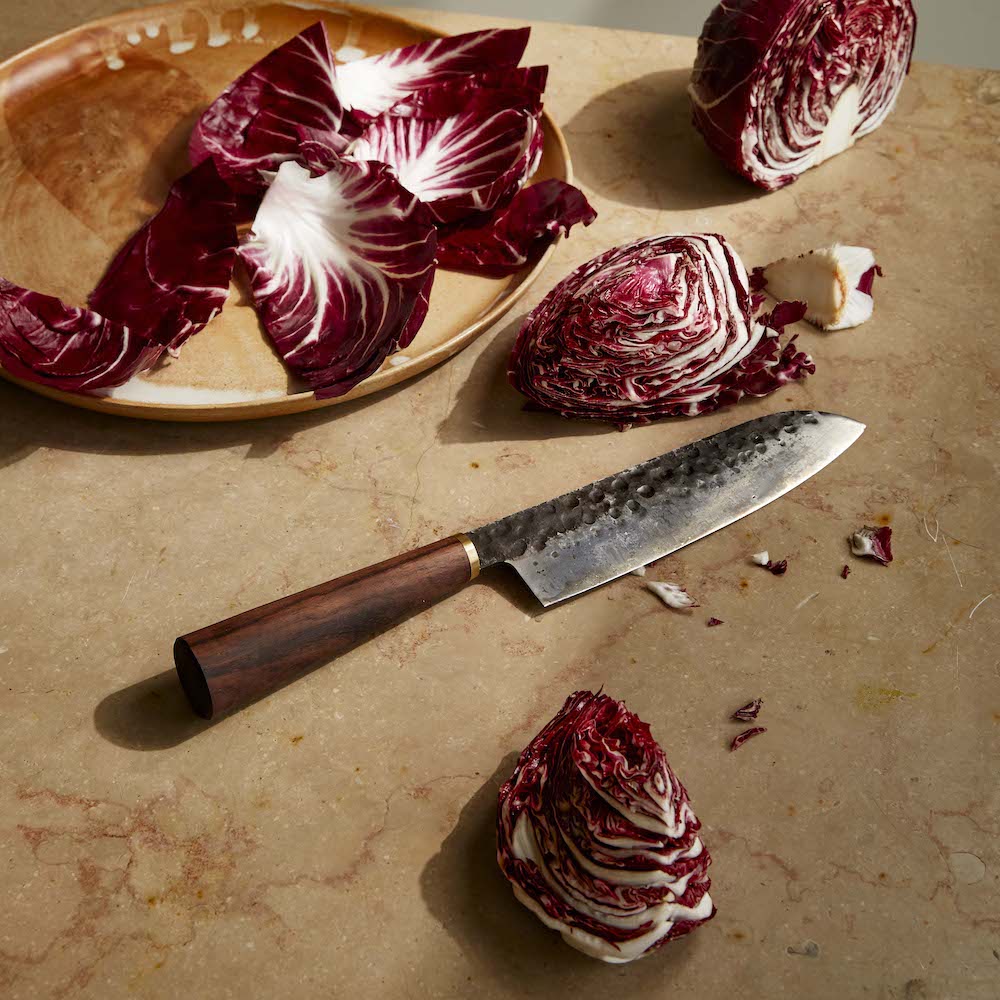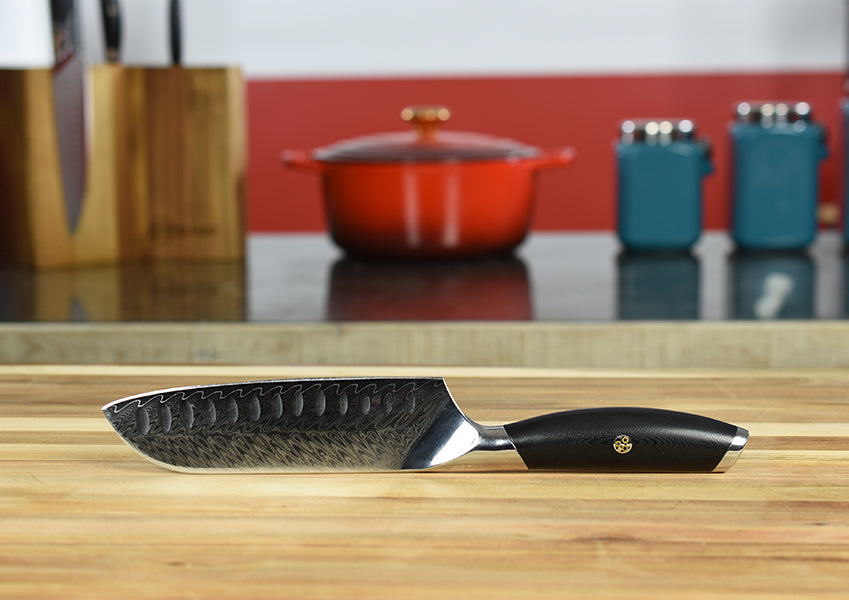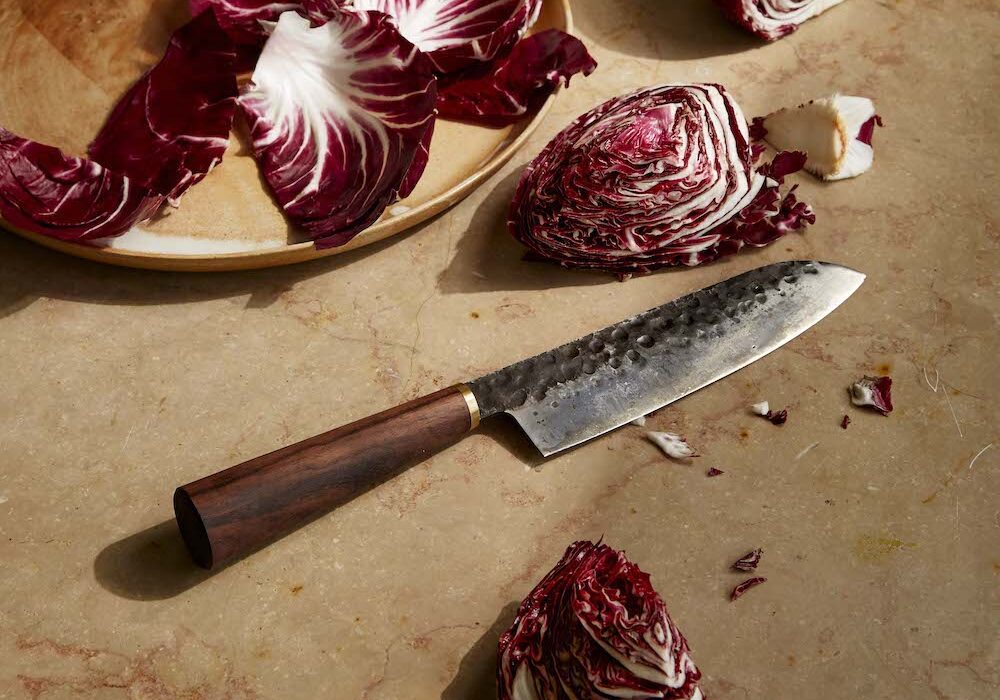The Santoku knife is a popular choice among professional chefs and home cooks alike. Known for its versatility and precision, it is crucial to maintain this kitchen essential properly. In this article, we will delve into the best practices for cleaning a Santoku knife to ensure its longevity and performance. By understanding and following these cleaning techniques, you can be sure your Santoku knife stays in top shape.

Why Proper Cleaning is Important
Maintaining the cleanliness of your Santoku knife is not just about hygiene; it also contributes to the knife’s overall performance and longevity. Regular and proper cleaning ensures that the edge remains sharp and the blade stays free of rust and stains.
Materials Needed for Cleaning
- Soft sponge or cloth
- Mild dish soap
- Warm water
- Drying cloth

Step-by-Step Guide to Cleaning a Santoku Knife
Step 1: Rinsing Off Residue
Start by rinsing the Santoku knife under warm water to remove any food particles or residue. Use a gentle stream to avoid accidental knife damage or injury.
Step 2: Applying Soap
Apply a small amount of mild dish soap to a soft sponge or cloth. Avoid using abrasive scrubbers or harsh detergents, as they can damage the blade.
Step 3: Gently Scrubbing the Blade
Gently scrub the blade with the soapy sponge, paying extra attention to areas with stubborn residue. Be sure to clean the entire knife, including the handle and the area where the blade meets the handle.
Step 4: Rinsing Thoroughly
Rinse the knife thoroughly under warm water to remove all soap residue. Ensure that the knife is completely free of soap to prevent any potential staining or damage to the blade.
Step 5: Drying the Knife
Use a clean, dry cloth to thoroughly dry the knife. It is essential to dry the knife immediately after washing to prevent rusting and water spots. Make sure to dry the blade, handle, and any crevices.

Additional Tips for Maintaining Your Santoku Knife
- Avoid soaking the knife in water for extended periods.
- Store the knife in a knife block, magnetic strip, or blade guard to protect the blade.
- Avoid using the knife on hard surfaces such as glass or granite.
Common Mistakes to Avoid
Avoid putting your Santoku knife in the dishwasher, as the high heat and harsh detergents can damage the blade and handle. Additionally, avoid using abrasive cleaning tools that can scratch and dull the knife.

Understanding the Santoku Knife
The Santoku knife, a staple in many kitchens, has unique features that distinguish it from other knives. Its name means ‘three virtues,’ representing its ability to slice, dice, and chop efficiently. Understanding these features helps in emphasizing the importance of proper maintenance.
The Blade
The Santoku knife typically features a shorter, wider blade compared to a traditional chef’s knife. This design allows for more precision and control, making it ideal for detailed kitchen tasks.
The Edge
Unlike Western chef’s knives, the Santoku knife often has a straight edge rather than a curved one. This design requires specific sharpening and maintenance techniques to keep it in optimal condition.
The Handle
The handle of a Santoku knife is designed for comfort and ease of use. It is important to keep the handle as clean and well-maintained as the blade to ensure a secure grip and prevent bacterial buildup.
FAQs
How often should I clean my Santoku knife?
It is recommended to clean your Santoku knife after each use to maintain its hygiene and longevity.
Can I use my Santoku knife to cut through bones?
The Santoku knife is not designed for cutting through bones. It is best used for slicing, dicing, and chopping vegetables, fish, and boneless meats.
Is it safe to clean my Santoku knife in the dishwasher?
No, it is not safe. Cleaning your Santoku knife in the dishwasher can damage both the blade and handle. It is best to hand wash with mild dish soap and warm water.
For more information on knife maintenance and sharpening, you can visit how to sharpen kitchen knives.
For further reading, you may also check out our articles on sharpen a chef knife, Serbian chef knife, and chef knife set.
As an Amazon Associate, I earn from qualifying purchases.
As an Amazon Associate, I earn from qualifying purchases.


